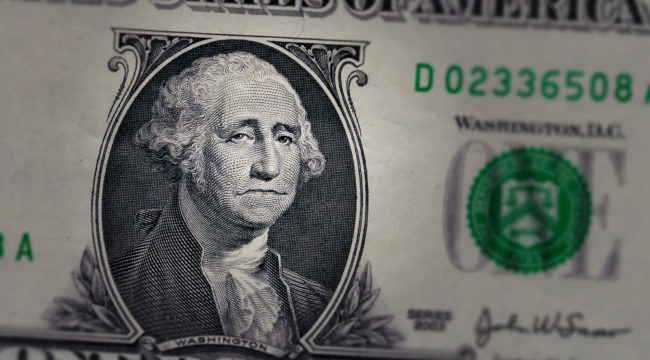One Step Closer to Recession
by Jim Rickards, Daily Reckoning:

As you know by now, the Federal Reserve raised interest rates again yesterday, its eighth increase since the rate hike cycle began in 2015.
In his post-announcement press conference, Jerome Powell cited a strong economy, low unemployment, solid growth, etc. He said that “It’s a particularly bright moment” for the economy.
Barring significant developments, the Fed may raise rates again in December and perhaps three times next year.
Meanwhile, the Commerce Department announced this morning that second quarter U.S. GDP expanded at a 4.2% annualized rate, confirming the earlier estimate.
On the surface it might look everything is great, that it is a particularly bright moment for the economy. But if you take a hard look behind the numbers, a different picture emerges.
A lot of the cheerleaders say Trump’s programs of tax cuts and deregulation will produce persistent trend growth of 3–4% or higher.
Such growth would break decisively with the weak growth of the Obama years. It would also make the U.S. debt burden, currently at 105% of GDP, more sustainable if GDP were to grow faster than the national debt.
There’s one problem with the happy talk about 3–4% growth. We’ve seen it all before.
In 2009, almost every economic forecaster and commentator was talking about “green shoots.” In 2010, then-Secretary of the Treasury Tim Geithner forecast the “recovery summer.” In 2017, the global monetary elites were praising the arrival (at last) of “synchronized global growth.”
None of this wishful thinking panned out. The green shoots turned brown, the recovery summer never came and the synchronized global growth was over almost as soon as it began.
Any signs of trend growth have been strictly temporary (basically moving growth from one quarter to another through inventory and accounting quirks) and are quickly followed by weaker growth. In the first quarter of 2015, growth was 3.2%, but by the fourth quarter that year growth had fallen to a near-recession level of 0.5%.
In the third quarter of 2016 growth was 2.8%, but it fell quickly to 1.2% by the first quarter of 2017. In the third quarter of 2017 growth was 3.2% but then returned to 2.0% by the first quarter of 2018, about the average for the past nine years.
This pattern of temporarily strong growth followed by weak growth has been characteristic of the entire recovery that began in June 2009 and entered its 10th year a few months ago. In fact, we’ve seen even more extreme reversals in the recent past.
In the third quarter of 2013, growth was 4.5%. But by the first quarter of 2014, just six months later, growth was actually negative, -2.1%, comparable to some of the worst quarters in recent recessions.
Growth was 5.0% in the third quarter of 2014, but then fell off a cliff and was barely positive, 0.2%, in the first quarter of 2015.
You get the point. Strong quarters have been followed by much weaker quarters within six months on six separate occasions in the past nine years. There’s no reason to believe this trend will end now.
The longer-term view of the entire recovery is more revealing. The recovery is currently 109 months old, the second-longest since the end of the Second World War. The average recovery since 1980 (a period of longer-than-average expansions) is 83 months.
So this expansion has been extraordinarily long — far longer than average — indicating that a recession should be expected sooner rather than later.
But the current expansion has also been the weakest recovery on record. Average annual growth during this expansion is 2.14%, compared with average annual growth for all expansions since 1980 of 3.21%. That 3.21% figure is what economists mean by “trend” growth.
Even with the latest GDP numbers, the current expansion does not even come close to that trend. The “wealth gap” (the difference between 3.2% trend growth and 2.1% actual growth) is now over $4 trillion. That’s how much poorer the U.S. economy is due to its inability to achieve sustainable trend growth.
Read More @ DailyReckoning.com
Loading...



